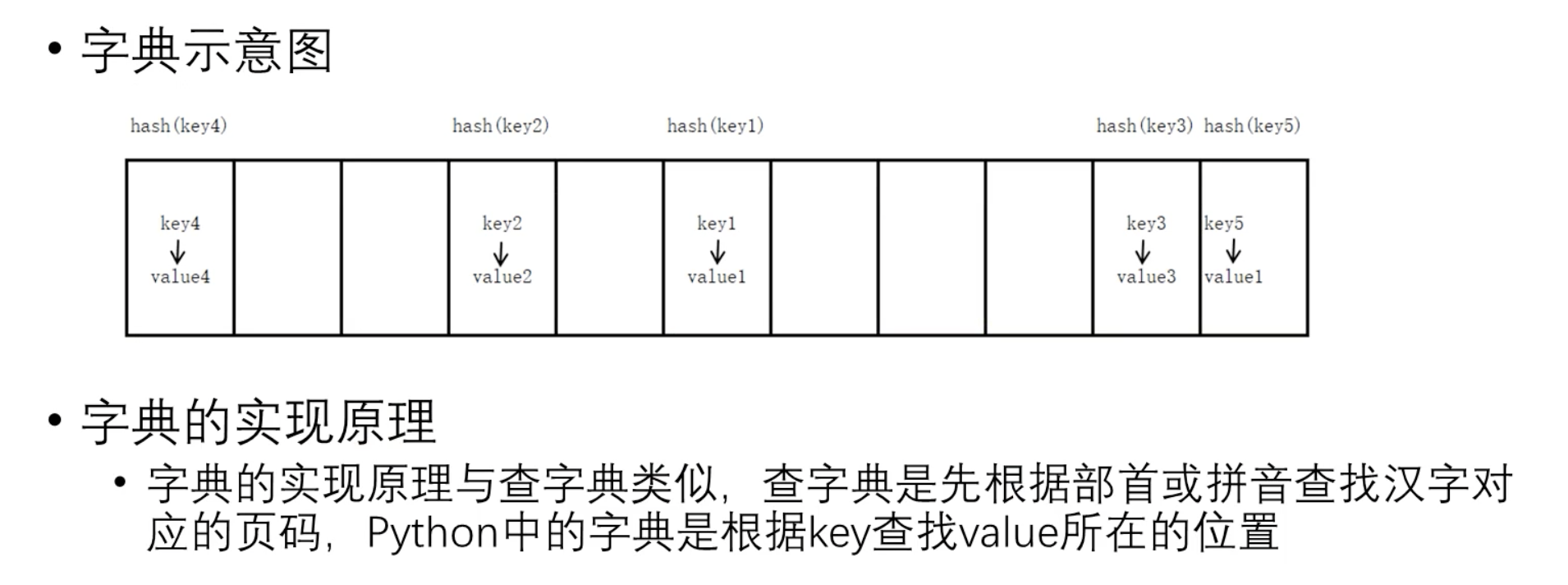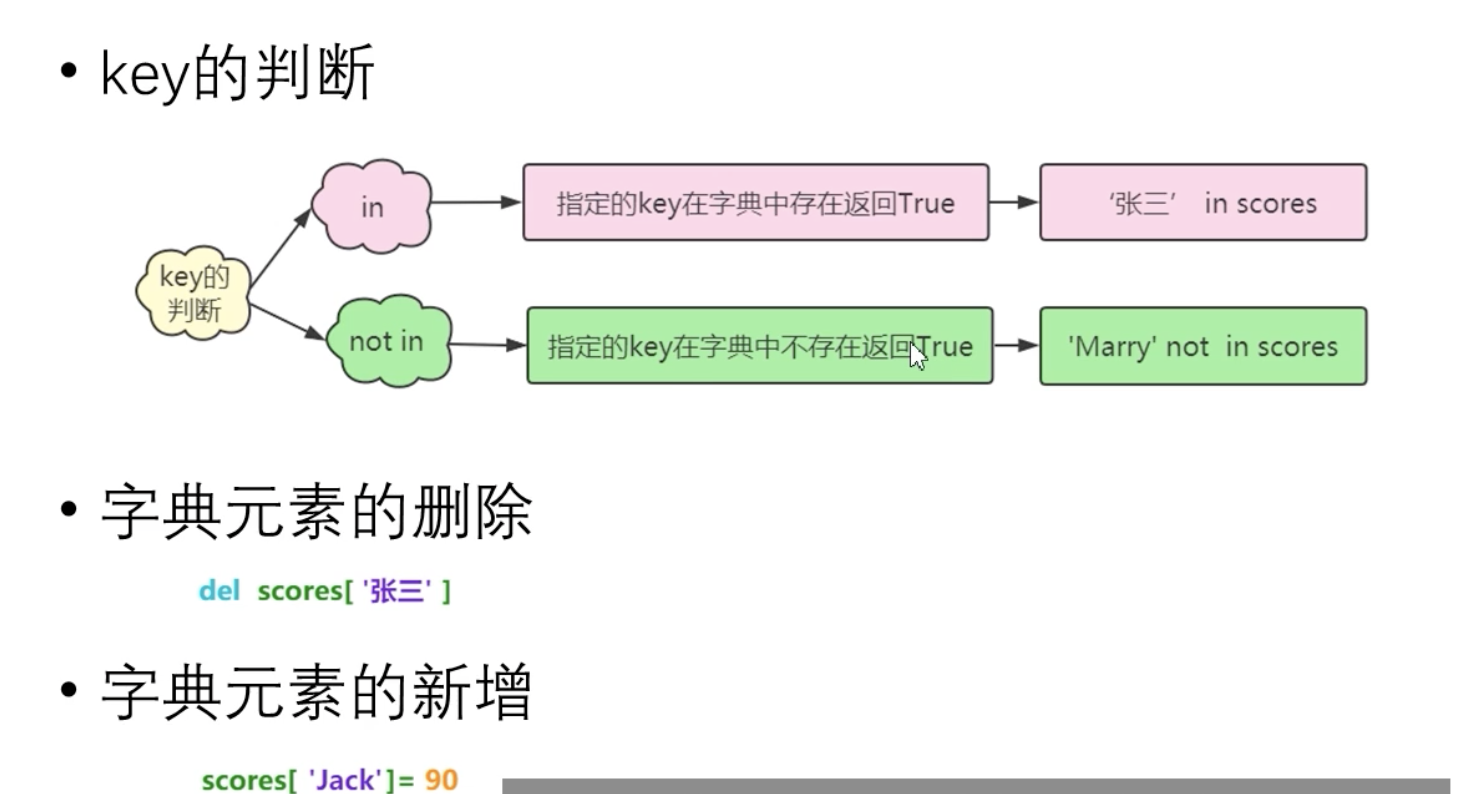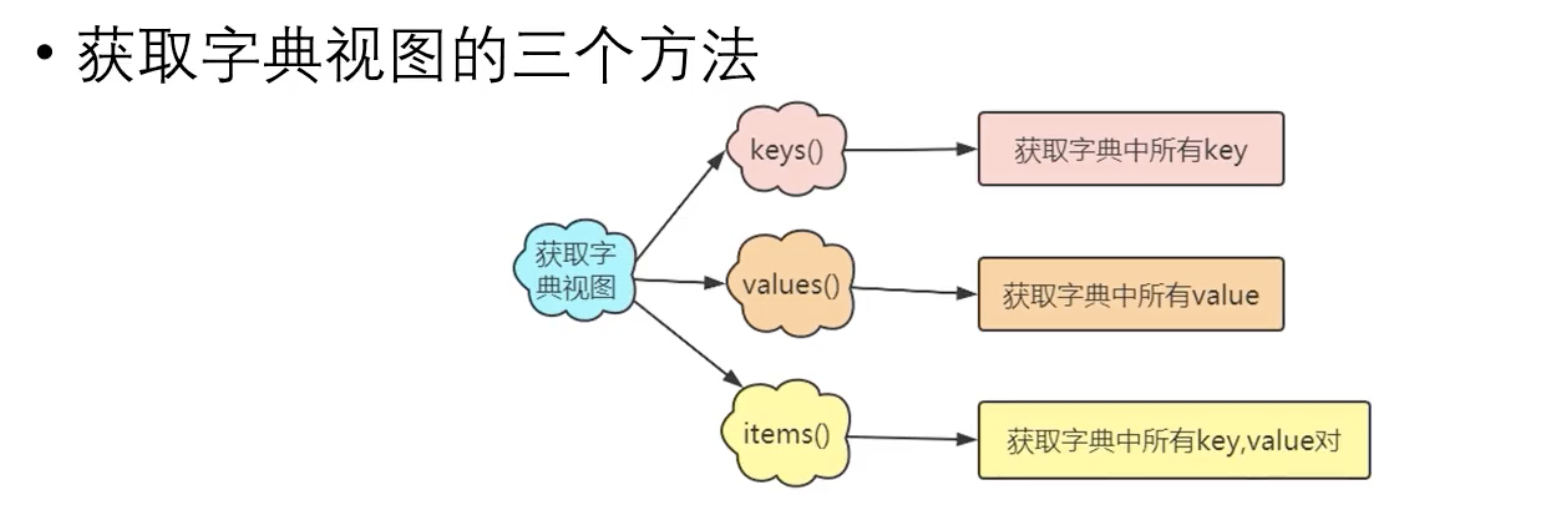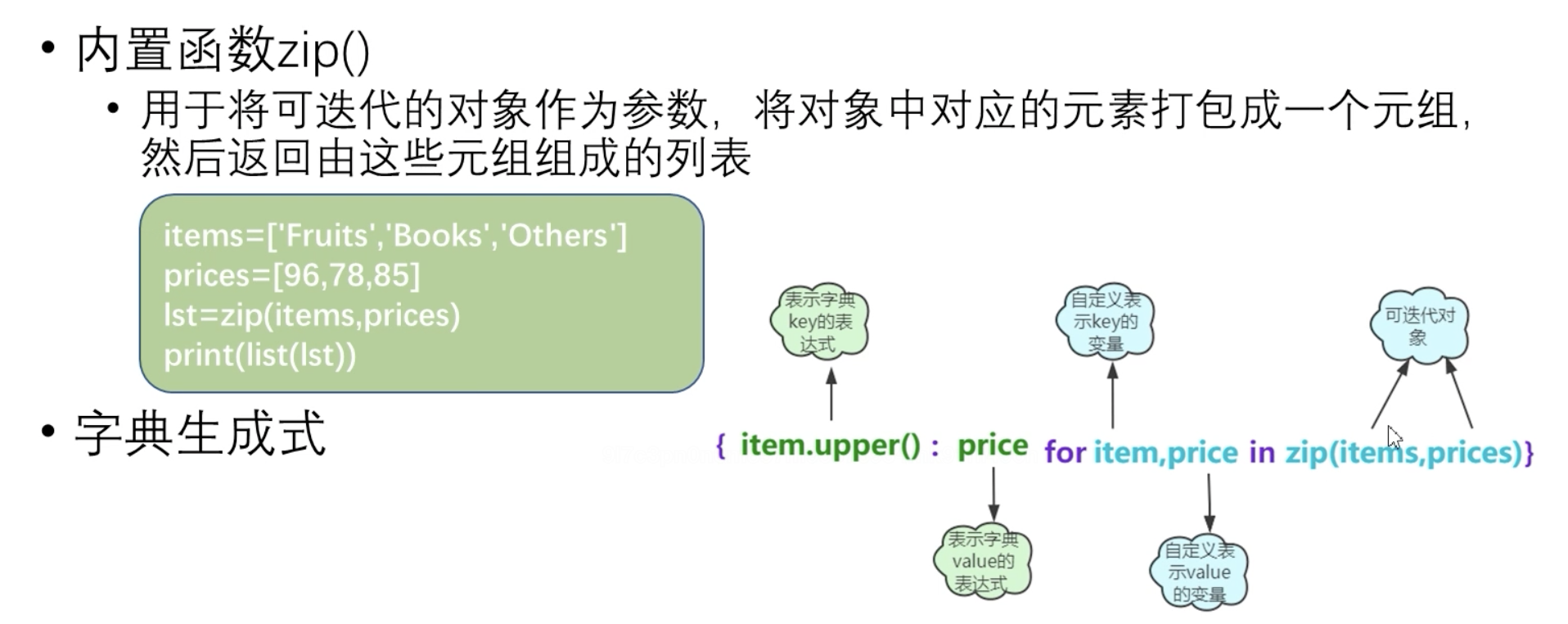作者:大永8899_226 | 来源:互联网 | 2023-09-23 12:06
文章目录前言一、什么是字典二、字典的创建1.使用花括号{}2.使用内置函数dict()三、字典中元素的获取四、字典的增删改五、字典的视图操作六、字典元素的遍历七、字典的特点八、字典
文章目录
- 前言
- 一、什么是字典
- 二、字典的创建
- 三、字典中元素的获取
- 四、字典的增删改
- 五、字典的视图操作
- 六、字典元素的遍历
- 七、字典的特点
- 八、字典生成式
- 总结
前言
python学习笔记day3 (仅供学习使用)
一、什么是字典
python内置的数据结构之一,与列表一样是个可变序列
以键值对的方式存储数据,字典是一个无序序列

二、字典的创建
1.使用花括号{}
'''使用{}创建字典'''
scores={'张三':100,'李四':98,'王五':45}
print(scores)
print(type(scores))
'''空字典'''
d={}
print(d)
2.使用内置函数dict()
student=dict(name='jack',age=20)
print(student)
三、字典中元素的获取

'''获取字典的元素'''
scores={'张三':100,'李四':98,'王五':45}
'''第一种方式,使用[]'''
print(scores['张三'])
'''第二种方式,使用get()方法'''
print(scores.get('张三'))
print(scores.get('陈六'))
print(scores.get('麻七',99))
运行:
100
100
None
99
四、字典的增删改

'''key的判断'''
scores={'张三':100,'李四':98,'王五':45}
print('张三' in scores)
print('张三' not in scores)del scores['张三']
print(scores)
scores['陈六']=98
print(scores)scores['陈六']=100
print(scores)
运行:
True
False
{'李四': 98, '王五': 45}
{'李四': 98, '王五': 45, '陈六': 98}
{'李四': 98, '王五': 45, '陈六': 100}
五、字典的视图操作

scores={'张三':100,'李四':98,'王五':45}
keys=scores.keys()
print(keys)
print(type(keys))
print(list(keys))
values=scores.values()
print(values)
print(type(values))
print(list(values))
items=scores.items()
print(items)
print(list(items))
运行:
dict_keys(['张三', '李四', '王五'])
<class &#39;dict_keys&#39;>
[&#39;张三&#39;, &#39;李四&#39;, &#39;王五&#39;]
dict_values([100, 98, 45])
<class &#39;dict_values&#39;>
[100, 98, 45]
dict_items([(&#39;张三&#39;, 100), (&#39;李四&#39;, 98), (&#39;王五&#39;, 45)])
[(&#39;张三&#39;, 100), (&#39;李四&#39;, 98), (&#39;王五&#39;, 45)]
六、字典元素的遍历
scores&#61;{&#39;张三&#39;:100,&#39;李四&#39;:98,&#39;王五&#39;:45}
for item in scores:print(item,scores[item],scores.get(item))
运行&#xff1a;
张三 100 100
李四 98 98
王五 45 45
七、字典的特点

八、字典生成式

items&#61;[&#39;Fruits&#39;,&#39;Books&#39;,&#39;Others&#39;]
prices&#61;[96,78,85,100,120]
d&#61;{item.upper():price for item ,price in zip(items,prices) }
print(d)
运行&#xff1a;
{&#39;FRUITS&#39;: 96, &#39;BOOKS&#39;: 78, &#39;OTHERS&#39;: 85}
总结